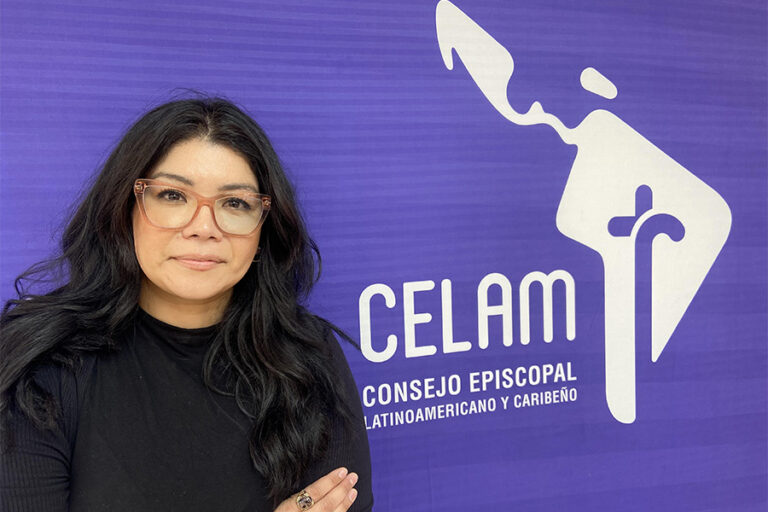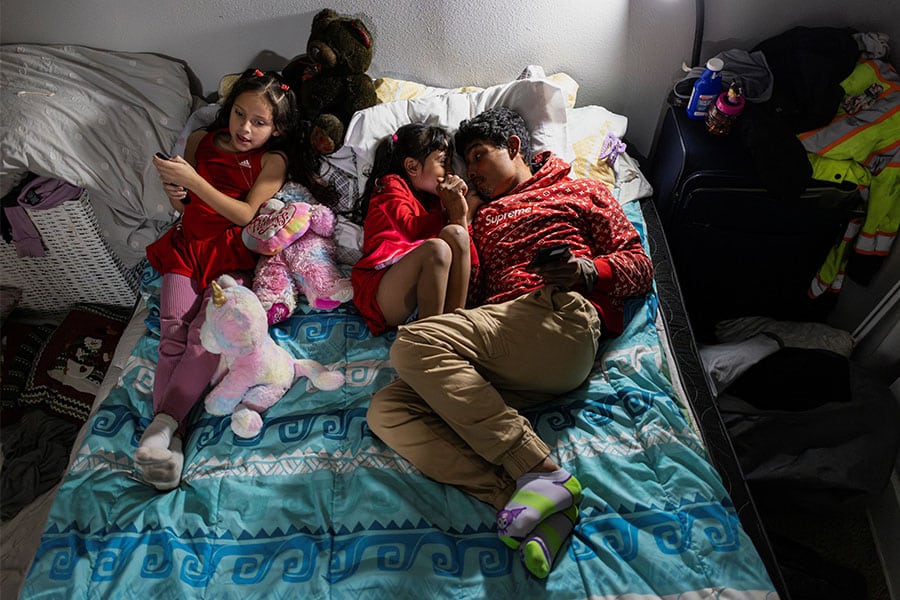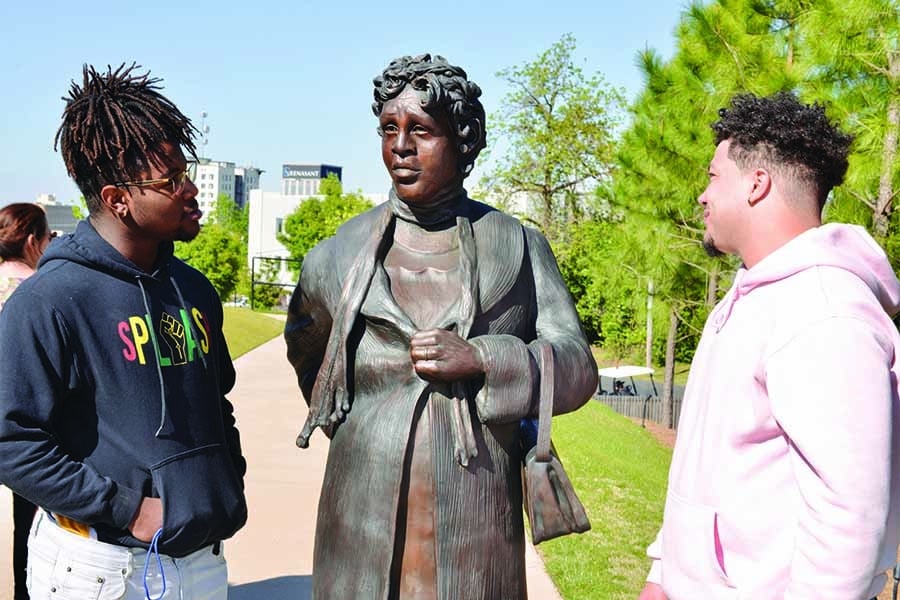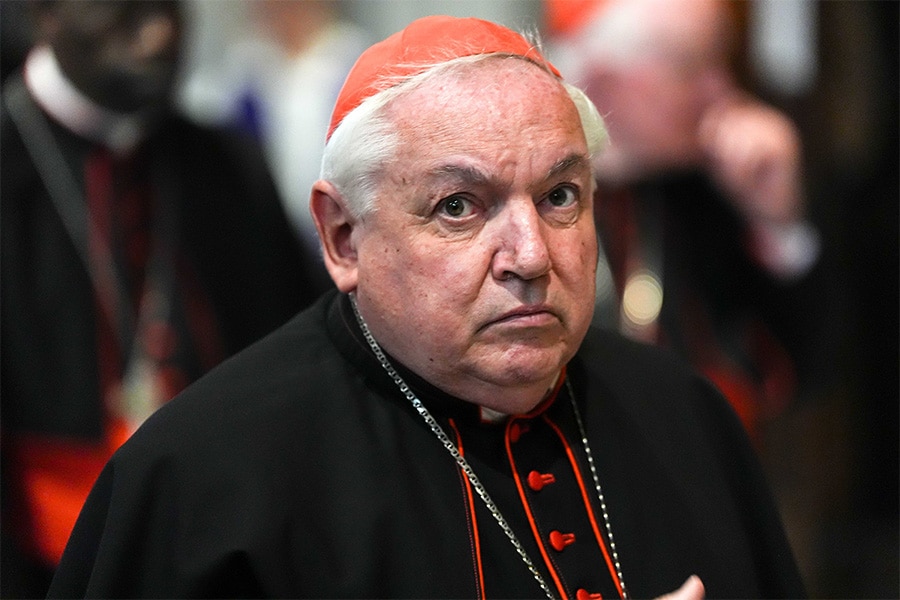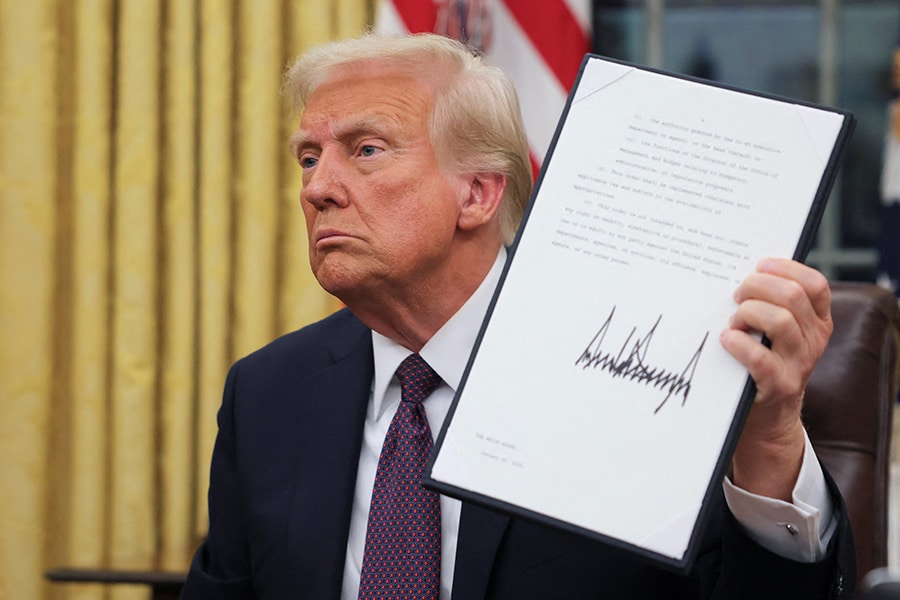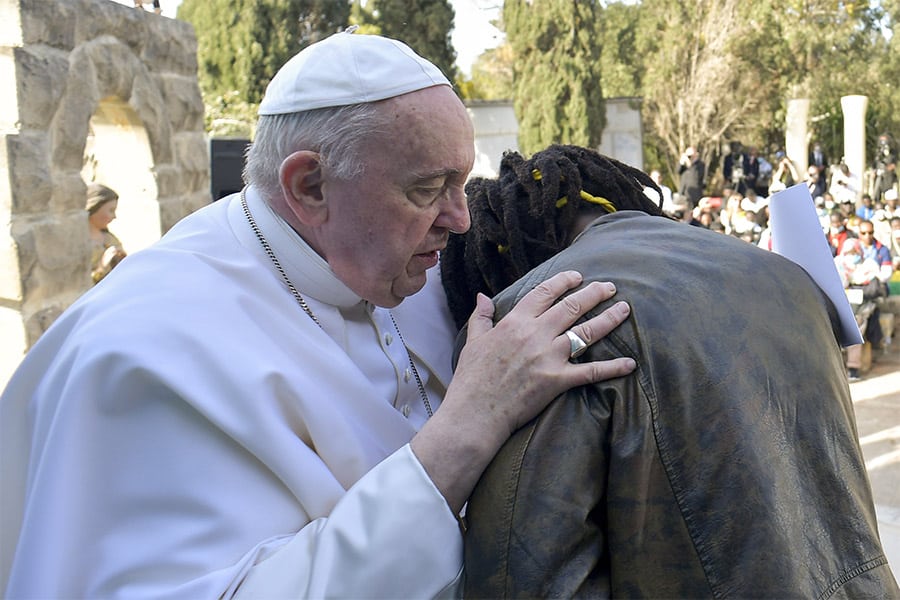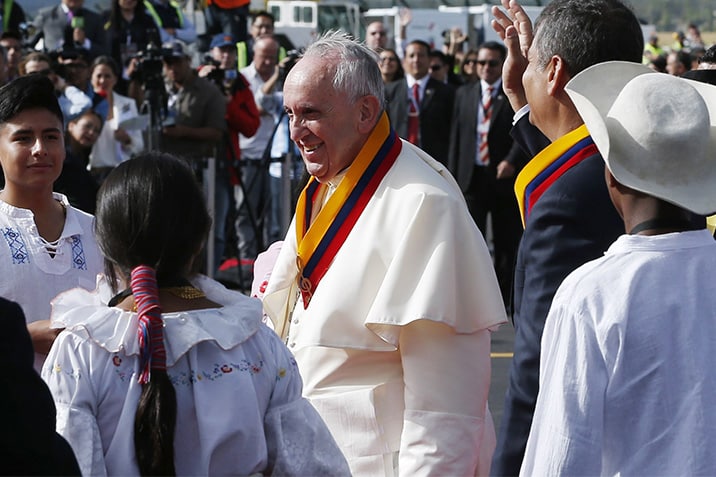BOGOTÁ, Colombia (CNS) — Many law enforcement officers associate Catholic imagery and symbols with criminality in the U.S. Latino community, a historian researching the American Southwest said.
In court records, law enforcement officers testify to stopping drivers by establishing “reasonable suspicion” of criminal activity due to Catholic symbols or objects on their cars, Daisy Vargas, a historian and professor of religious studies at the University of Arizona, told Catholic News Service Nov. 29 during a three-day theology conference in Bogotá.
She said that possessing images of Catholic saints, clutching prayer cards or hanging rosaries from rear-view mirrors have been cited in legal disputes to justify vehicle searches and even arrests.
A 2011 federal case in New Mexico stated that the presence of a rosary in a car “aroused suspicion” and justified a vehicle search since the involved officer’s “training and experience indicates that contraband couriers often keep religious articles on their vehicles to appear law-abiding and religious.”
A 2019 case in Ohio included as cause for a vehicle search that the defendant was wearing a rosary as a necklace and that the officer, “as a practicing Catholic, found it odd because it is generally not done in his culture.” The officer “explained that this could be considered a ‘disclaimer’ or a sign used in an attempt to show that appellant was a good, law-abiding citizen.”
“We know criminality on the border is about identifying people that look a particular way,” Vargas told CNS; and that includes identifying the religious symbols that often tie people to certain racial groups. She said that such associations are reinforced through law enforcement training, which at the border is often conducted by private companies.
Vargas said that law enforcement officers “were taught that good Catholics don’t wear rosaries as necklaces,” so when they encounter Latinos with a rosaries around their necks it creates suspicion, since they see them as “pretending to be good people or pretending to be good moral citizens.”
In their testimony and in affidavits, law enforcement officers are repeatedly saying, “We were taught that these Catholic saints (or) that the use of the rosary in this particular way is enough for us to suspect criminal activity,” Vargas said.
But she noted that it is not only Catholics being targeted in traffic stops, rather “this is a process of attaching certain identifiers, of making connections that are then used to racialize, to create a racial category for a particular group of people.”
“The same way that we saw it with the hijab post 9/11, I would say is similarly happening with the rosary,” Vargas said.
She added that the tension is “intra-Catholic” as well, since it is not only non-Catholics that stop people in possession of Catholic imagery, but Catholics in law enforcement who target others for not practicing “the right kind of Catholicism.”
Vargas said that Catholic practices introduced to Latin America by Spaniards, such as penitential rites involving self-flagellation and Passion plays, made other groups of Catholics see Latino — and particularly Mexican — Catholics as “backward” and still tied to their sometimes-violent Indigenous rituals, which eventually led to the church banning such penitential practices in the United States.
Those differences led to a perception that “Mexicans have not been fully catechized, that the conversion was incomplete,” she said. “You still see those traces today in comparing certain types of Catholic practices, saint veneration and wearing of images to a past that should be left behind.”
Compared to other predominantly Catholic ethnic groups that migrated en masse to the United States and which became assimilated, Vargas asked: “What’s different about Latinx-identified Catholics?”
“Is it because they continue to speak the same language? Is it physical markers? Is it the proximity to Mexico and Latin America and the proximity to the U.S.?” she asked. “It’s racialized, and I think that’s the difference. It’s not just about religion.”
Latinos are estimated to make up more than a third of all Catholics in the United States. According to data from Pew Research Center, 43% of U.S. Latinos identified as Catholic in 2022 and Latinos remain twice as likely as U.S. adults overall to identify as Catholic.
Read More Immigration & Migration
Copyright © 2023 Catholic News Service/U.S. Conference of Catholic Bishops

